Fixed: USB Device Malfunctioned and Not Recognized in Windows
6 Fixes| USB Device Malfunctioned and Not Recognized
Here are the solutions to the USB device malfunctioned and is not recognized issue. If you have this USB device error, don't worry. Use the methods below to make your USB recognizable and usable again.
| Effective Solutions | Step-by-step Troubleshooting |
|---|---|
| Fix 1. Unplug Computer | Shut down the computer > Unplug power cable...Full steps |
| Fix 2. Change USB Cable/Port | Check all the available USB cables and ports...Full steps |
| Fix 3. Uninstall Device Driver | Navigate to the Driver tab, choose Uninstall...Full steps |
| Fix 4. Update Device Driver | Choose Update Device Driver in Device...Full steps |
| More Fixes and USB Data Recovery | Change USB settings and reinstall the USB...Full steps |
"USB device not recognized" is an error that usually occurs on Windows computers when you plug in a USB device. When Windows generates such an error, the USB will not show up on your computer, and you can't access your data. In different situations, the error is followed by various messages:
"The last USB device you connected to this computer malfunctioned, and Windows does not recognize it."
"One of the USB devices attached to this computer has malfunctioned, and Windows does not recognize it. For assistance in solving this problem, click this message."
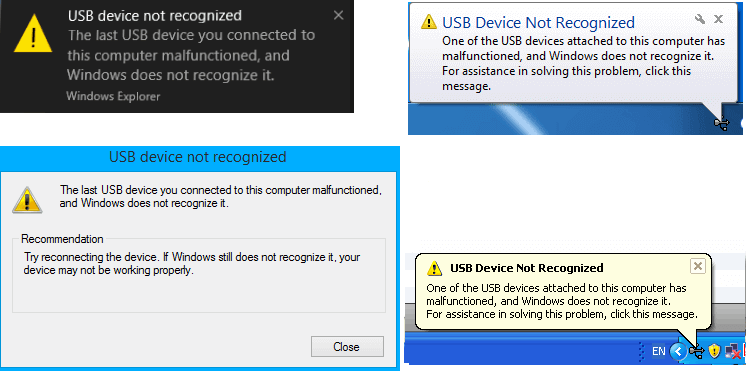
How to Fix USB Device Not Recognized in Windows
If your device is not recognized on your computer, try the six solutions below to make it show up again. We strongly recommend you follow the below methods in sequence. Since there are many reasons that lead to a Windows failed to recognize the USB device error, each method is for a specific scenario.
Fix 1. Unplug Your Computer from the Power Source
This sounds like a piece of cake thing to do but it works! For most unrecognized USB devices, there is typically nothing wrong. A simple computer restart could resolve the issue. This method reboots the motherboard, which has all of the computer hardware connected to, including the USB ports. Rebooting the motherboard usually helps solve the temporary insufficient power supply for outside devices.
Step 1. Cut your computer power at its source, which is unplugging your computer from the wall outlet.
Step 2. Leave the computer unplugged for a few minutes, and then plug it back into the wall outlet.
Step 3. Check if the computer detects the USB device and assigns it a drive letter.
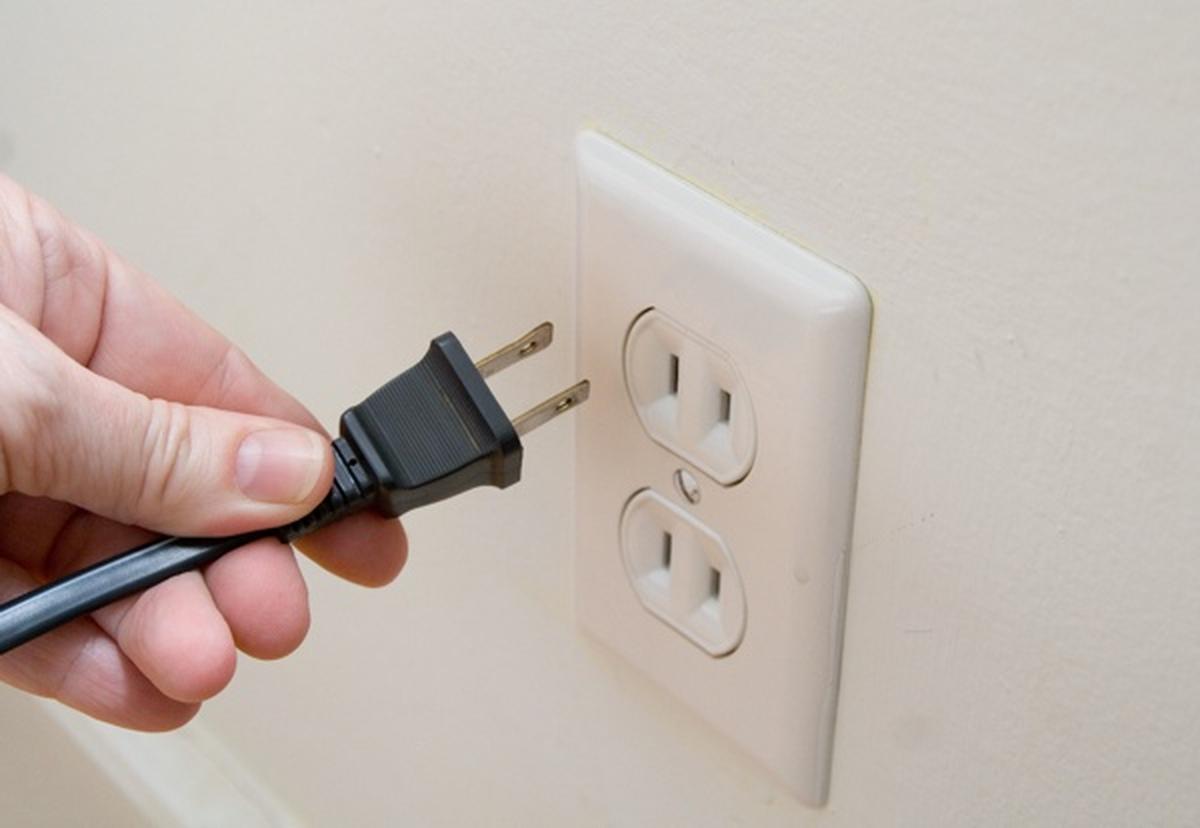
If this fix didn't work, don't panic. Follow the other fixes below.
Fix 2. Change the USB Port
Is your computer's USB port not working properly? Check the available USB ports one by one and see whether it is a computer hardware problem or a problem with the device itself. If changing to another port solves the problem, then there is something wrong with the previous port. You can give up on that broken port, or send your computer for repair.
Fix 3. Uninstall USB Device Driver to Make USB Recognizable
If the USB drivers are unstable or damaged, this method removes those drivers. Know that uninstalling the drivers can cause all USB ports to become dysfunctional.
Step 1. Right-click on the Windows logo and choose Device Manager.
Step 2. Find and expand Universal Serial Bus controllers, right-click on any of the USB drivers, and click Uninstall. Do this for all USB drivers one by one.
Step 3. Restart your PC. The USB drivers will automatically reinstall and solve the corrupted USB devices problem.
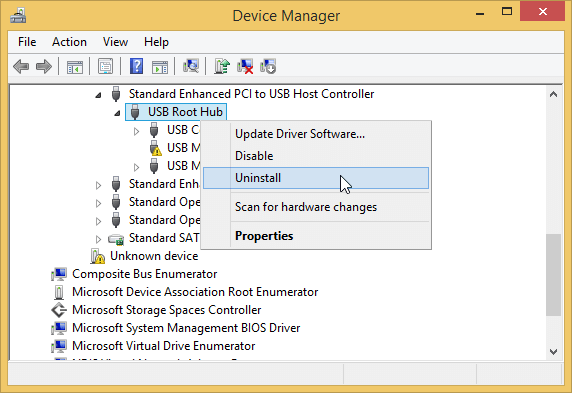
Fix 4. Update/Rollback a Device Driver
Many YouTube videos and IT forums suggest using Device Manager to troubleshoot non-recognizable USB devices. Give this method a go and see if it works for you.
Step 1. Right-click on the Windows logo and choose Device Manager.
Step 2. Expand "Universal Serial Bus Controllers" and you will see an item called "Generic USB Hub". Righ-click on the first Generic USB Hub and choose "Properties".
Step 3. Navigate to the "Driver" tab and choose "Update Driver".
Step 4. When asked how do you want to search for driver software, there are two options.
1. Search automatically for updated driver software
This way uses an automatic update by Windows. When this is finished, all you need to do is to disconnect the USB device, restart the computer, and reconnect the USB device again. Windows will install the latest driver for you.
2. Browse my computer for driver software
When you choose this option, you need to continue with the pop-up "let me pick from a list of device drivers on my computer."
From the list, select Generic USB hub, which is normally the only choice. Click "Next" and then Windows will install the driver for you.

- Tip
- If updating the driver doesn't help solve the USB device problem, try to update each Generic USB Hub until you have updated all.
In the same path as updating the driver, roll back to the previous driver when the error didn't occur. Instead of selecting "Update Driver" in the "Driver" tab, choose "Roll Back Driver" this time.

The changes made on the computer power and the device driver should take effect, and your USB device will no longer report issues. If this is not the case, try the other three methods one by one.
Fix 5. Change the USB Selective Suspend Settings
Another possible reason your USB malfunctions is that the hub driver suspends the USB automatically. In this case, changing the USB selective suspend settings could help.
Step 1. Right-click on the Windows icon and click Power Options.
Step 2. In the Choose or customize a power plan window, click Change plan setting.
Step 3. In the Edit Plan Settings window, click Change advanced power settings.
Step 4. In the Power Options window, find and expand USB settings, expand USB selective suspend settings, and Disable both On battery and Plugged in settings.
Step 5. Click Apply and then OK to save the settings.
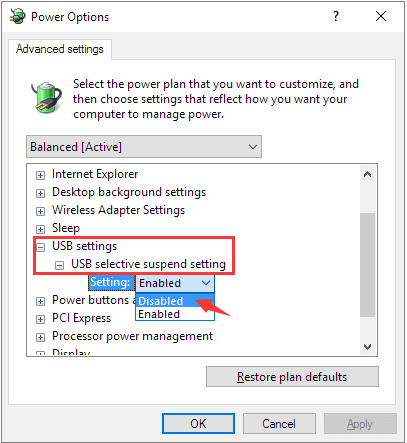
Fix 6. Fix USB Root Hub
The USB root hub is the software driver that lets you connect multiple USB peripherals to your computer. Most computers have multiple root hubs so you can share the data bus across multiple devices. So, if the computer cannot recognize your USB drive, try to fix the USB root hub.
Step 1. Open Device Manager, find the Universal Serial Bus controllers option, and single-click it to expand it.
Step 2. Find the USB Root Hub option in this category, right-click it, and choose Properties.
Step 3. Go to the Power Management tab and uncheck the "Allow the computer to turn off this device to save power" option. Then, click OK to save your changes.

Fix 7. Turn to Remote USB Repair Service
If you still cannot fix your USB drive, you can turn to experts. Our USB repair experts can solve your problems easily.
Consult with SalvageData's experts to retrieve data from inaccessible or corrupted data from all brands and formats of digital media.
- Certified ISO–5 class 100 cleanroom recovery
- Free diagnostic, no data, no charge
- Support all operating systems and devices
- Offer a range of turnaround times for fast recovery
Further Troubleshooting: Data Recovery from USB Flash Drive
The six ways we outlined above are all the possible ways to fix the "USB device malfunctioned and not recognized" error.
If one of the fixes worked, you should be able to access your USB and use the saved data on it again.
If you have resolved the problem but find that data is missing from your USB flash drive, you need third-party software to retrieve your data. Here, Qiling disk data recovery can help when your USB device does not show up on your computer but appear in Disk Management. The program works very well in Windows 10/8/7/XP and previous versions.
Qiling Hard Drive Data Recovery Software
- Recover data from SD card, emptied recycle bin, memory card, flash drive, digital camera, and camcorders
- Restore data for sudden deletion, formatting, hard drive corruption, virus attack, system crash under different situations
- Repair corrupted files on the USB drive, including damaged photos, videos, and documents
Step 1. Choose the USB drive to scan
Launch Deep Data Recovery and choose file types. Click "Next" to start.
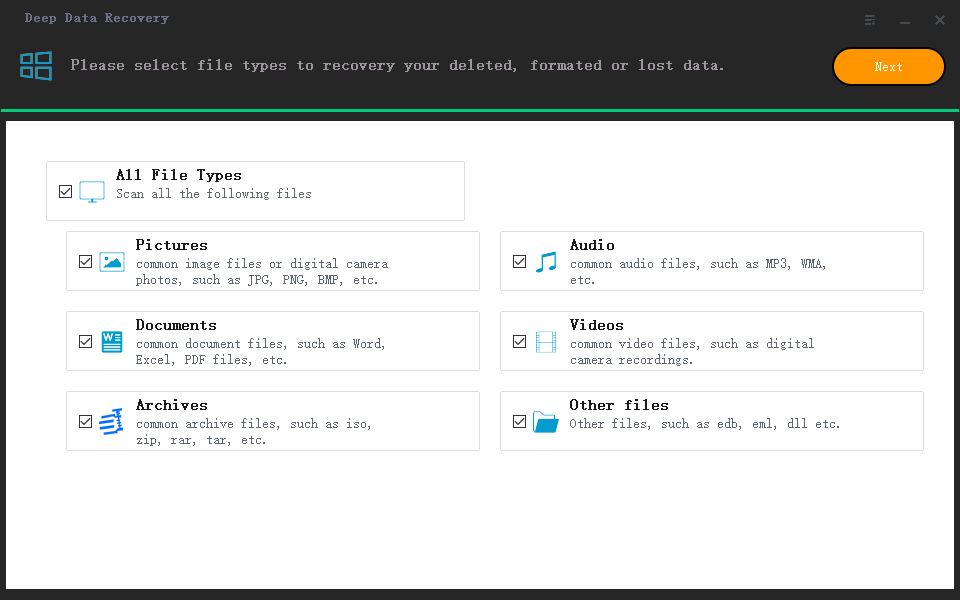
Step 2. Choose the USB drive to scan
Choose your USB drive where you lost important files. Click "Scan" to start.
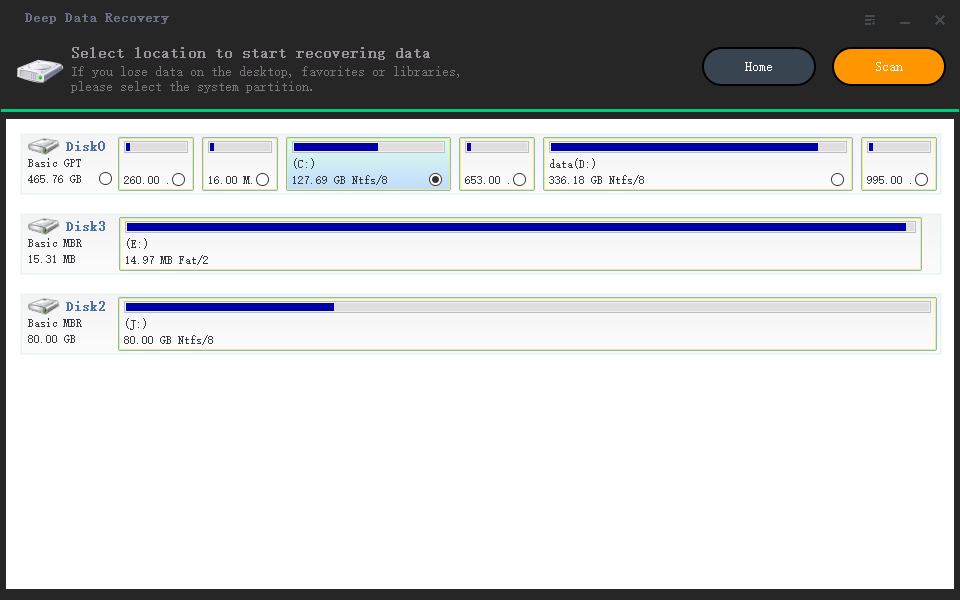
Step 3. Check and preview USB drive data
When the scanning is finished, you can quickly locate a specific type of file by using the Filter feature as well as the Search option.
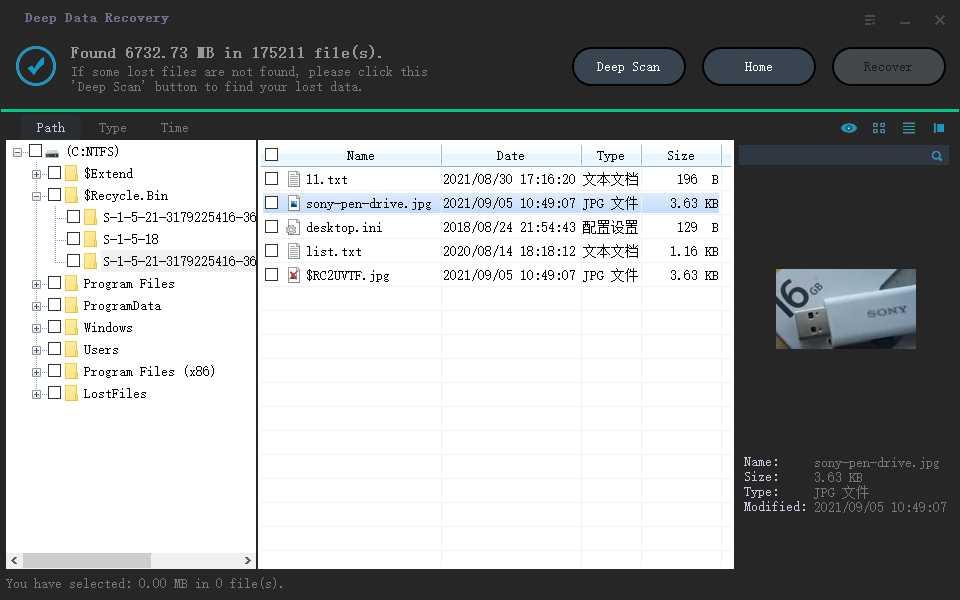
Step 4. Restore flash drive data
After checking and finding lost USB drive files, click "Recover" to restore them. You shall save the found files to a safe location on your PC rather than to your USB drive.
When you retrieve data from USB devices, we suggest you save retrieved files to a secure location to avoid further problems.
Bonus Tip: Format USB to NTFS/FAT32 and Recreate Partition on USB
A few people encountered the issue more than once. They said the same USB device started malfunctioning again after a short period of repairing it. If this is the case with you, formatting and recreating a new partition can help.
- Connect the USB to the PC, right-click on This PC/My Computer, and select Manage.
- Enter Device Manager, select Disk Management, locate and right-click on your malfunctioned USB, and select Format volume...
- Finish the format process and set the file system to NTFS or FAT32.
Check whether the USB shows up on your computer or not. If not, follow the steps below:
- Open Disk Management, right-click on USB, select Delete Volume, and complete the process.
- When USB shows as unallocated, right-click on it, select New Simple Volume, set the drive letter, set the file system (NTFS/FAT32) for it, and complete the process.
After this, you should be able to access the USB drive on your PC and save data on it again.
Related Articles
- Fix Hard Drive Disappeared in Windows 10 Without Losing Data
- Fix An External Hard Drive That's Not Working/Responding/Showing Up
- Fix SanDisk Cruzer Not Recognized Issue
- SSD vs HDD Lifespan, Which Lasts Longer SSD or HDD? What's the Difference